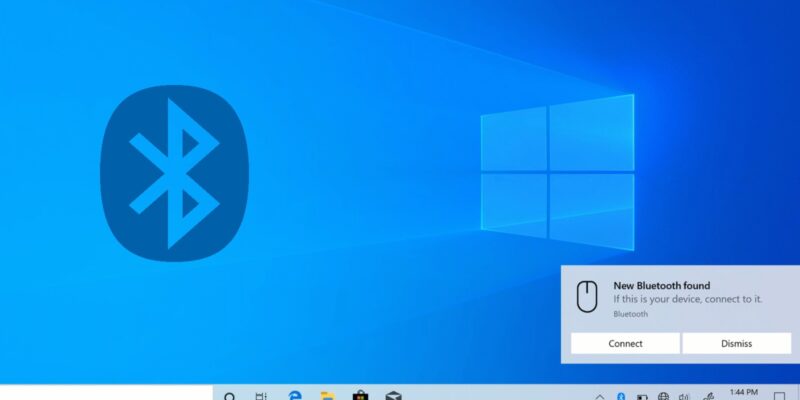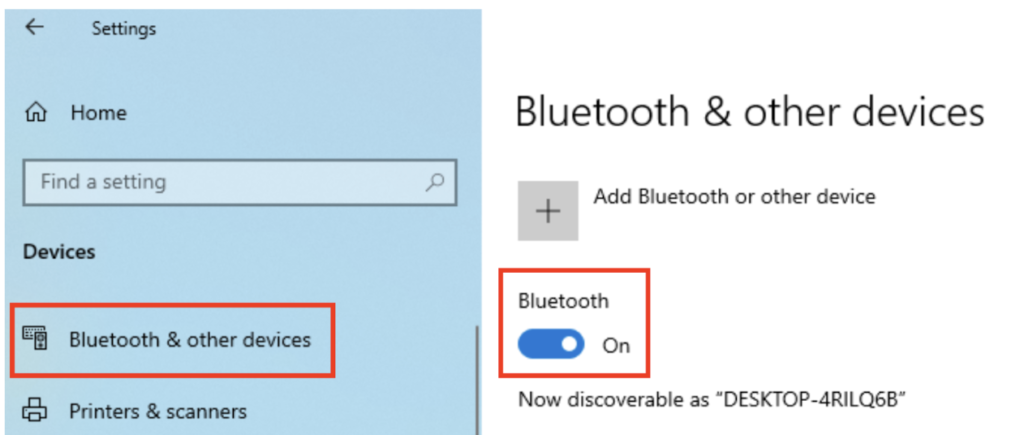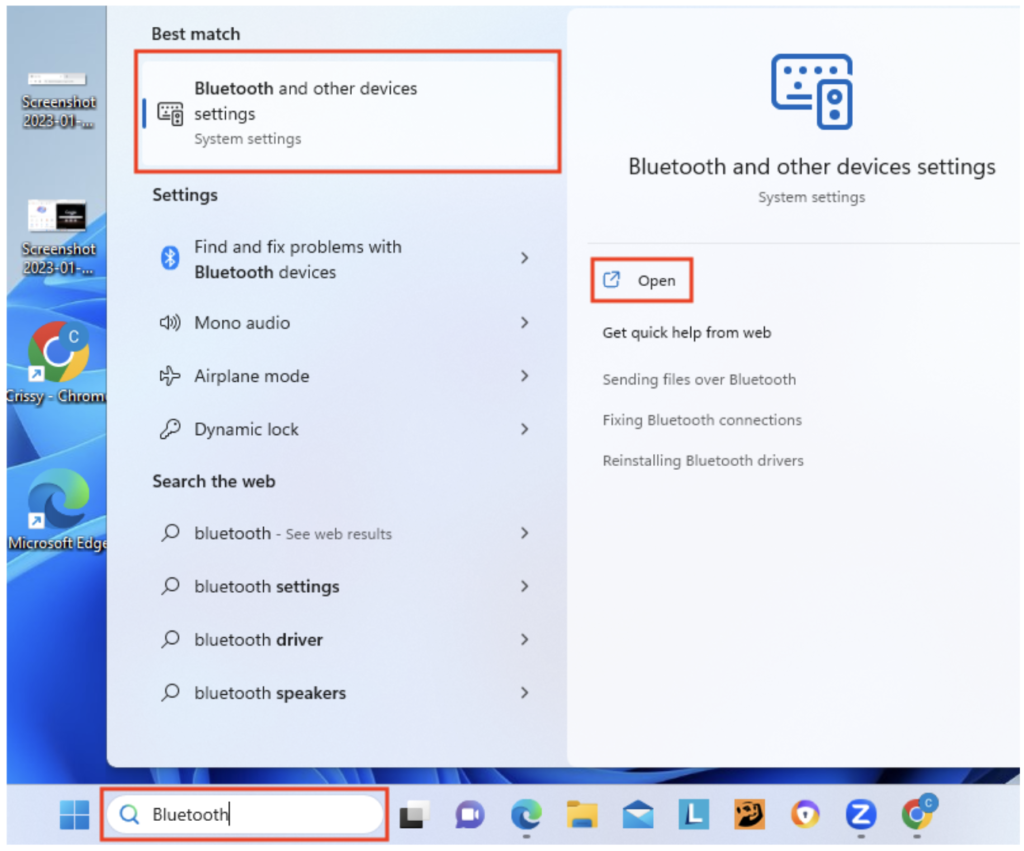
Bluetooth technology has become an integral part of our daily lives, allowing us to connect various devices wirelessly and effortlessly. Whether you want to pair your headphones, mouse, or transfer files from your iPhone to your PC, turning on Bluetooth on your Windows 10 or Windows 11 computer is the first step. In this guide, we will walk you through the process of how to turn on Bluetooth on Windows 10 and 11 and provide solutions if you encounter any issues.
How to Turn on Bluetooth on Windows 10 and 11
If you’re really curious to see and learn how to turn on Bluetooth on Windows 10 and 11, follow these simple steps to turn it on:
Windows 10
- On your keyboard, hold down the Windows logo key and press the I key to open the Settings window.

- Click on Devices in the Settings window.
- Locate the Bluetooth toggle switch, which is currently set to Off, and click on it to turn Bluetooth on. The status will change to On.
Windows 11
- Launch the Settings app.
- Click Bluetooth and devices on the sidebar.

- Turn on the Bluetooth switch. When devices are in pairing mode, you can also add them from here.
Don’t worry if you run into any problems or if the Bluetooth switch goes missing. In the next section, we will walk you through the connecting stages.
How Can I Connect a Bluetooth Device to Windows 10 and 11?
To connect a Bluetooth device to Windows, follow these steps:
Windows 11
- In the Windows taskbar, select the Network/Sound/Battery tray.
- Next to the Bluetooth sign, click the > icon. (Another way to toggle Bluetooth on or off is to click on the emblem itself.)
- Select your device from the drop-down menu that opens.

Windows 10
- Set your Bluetooth device to pairing mode.
- Launch the Settings app. You might have to look for it in the Start menu.
- Navigate to Settings > Devices and select Bluetooth and other devices.
- Click Bluetooth, then Add Bluetooth or other device.
- When your device shows up in the list, select it.
It’s worth noting that both Windows 11 and 10 offer Swift Pair, a function that allows some Bluetooth devices to pair immediately when they’re close to your PC.
Troubleshooting Bluetooth Issues in Windows 10 and 11
Bluetooth connectivity issues can be frustrating, but there are several troubleshooting methods you can try to resolve them. Let’s explore the top three ways to fix Bluetooth problems in Windows 10 and 11.
Update the Bluetooth Driver on Your Computer
Outdated or incompatible Bluetooth drivers can often cause connectivity issues. To ensure your Bluetooth driver is up to date, follow these steps:
- Head to your computer manufacturer’s website and search for the latest Bluetooth driver that is compatible with your version of Windows 10 (32-bit or 64-bit).
- Download the correct Bluetooth driver and manually install it on your computer.
- If you prefer a more convenient option, you can use a driver update tool like Driver Easy to automatically detect and install the Bluetooth driver for your computer.
Re-enable the Bluetooth Driver Software in Device Manager
Sometimes, disabling and re-enabling the Bluetooth driver software can help resolve connectivity problems. Here’s how you can do it:
- Right-click on the Start button and select “Device Manager.”
- In the Device Manager window, locate your Bluetooth device under the Bluetooth section.
- Right-click on the Bluetooth device and choose “Disable device.” If prompted for confirmation, click “Yes.”
- Right-click on the disabled Bluetooth device again and select “Enable device.”
Make Sure the Bluetooth Support Service is Running
The Bluetooth Support Service plays a crucial role in enabling Bluetooth functionality on your Windows 10 computer. If this service is not running, you might encounter issues. Follow these steps to ensure the Bluetooth Support Service is running:
- Press the Windows logo key and the R key simultaneously to open the Run box.
- Type services.msc in the Run box and press Enter.
- In the Services window, locate Bluetooth Support Service.
- Right-click on Bluetooth Support Service and click Start. If the Start option is grayed out, click Restart.
- Right-click on Bluetooth Support Service again and select Properties.
- Set the startup type to Automatic, click Apply, and then click OK.
After performing these troubleshooting steps, restart your computer and check if the Bluetooth option is now available. If you can successfully turn on Bluetooth, it’s done.
Also Read: Ways to fix “No Internet Secured”
Conclusion
Enabling Bluetooth on your Windows 10 or 11 PC is a simple operation that allows you to connect to different devices and transfer files wirelessly. You should be able to turn on Bluetooth seamlessly if you follow the steps provided in this guide. If you encounter any problems, we have offered troubleshooting tools to assist you in resolving them.

![How to Pause Location on Find My iPhone Without Them Knowing? [2024] 22 how to pause location on find my iphone](https://izood.net/wp-content/uploads/2024/10/How-to-Pause-Location-on-Find-My-iPhone-Without-Them-Knowing-400x300.png)


![How To Inspect Element on iPhone [4 Methods] 25 how to inspect element on iphone](https://izood.net/wp-content/uploads/2024/10/how-to-inspect-element-on-iphone-3-400x300.png)


